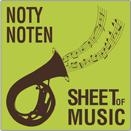Arranger:
Rosenhaus, Steven Setting:
String Orchestra
This beautiful Scottish Ballad commemorates The Rowan Tree, also called the Traveler's Tree because it is said to protect those on journeys. Everyone in the ensemble in this expressive musical journey has an opportunity to take on the melody at least in part. Equal parts comfort and wistfulness, this lovely tune can transport your musical travelers to magical realms of expression! The Rowan Tree is a Scottish folk song that dates back at least to the 19th century, when it was collected by Lady Carolina Nairne (neé Oliphant, 1766–1845) and made its way into R.A. Smith book The Scottish Minstrel (1822). Lady Nairne was in some ways ahead of her time, as it was unusual for a woman to collect folk music (and a songwriter!). The rowan is a tree seen throughout Scotland and the rest of the U.K. The name ultimately refers to the color red, specifically the colors of the tree's autumn foliage and berries. In Celtic mythology the rowan is called the Traveler's Tree because it protects those on journeys from getting lost. Often you'll find rowans growing by Scottish gates or front doors, mostly to ward off witches. The song describes the tree metaphorically as a lover as it also conjures emotionally satisfying scenes in the singer's mind of home and hearth. Performance Notes This is a lovely tune, equal parts comfort and wistfulness. Everyone in the ensemble has an opportunity to take on the melody at least in part; when playing the tune be sure to play legato, giving full bows when possible. This arrangement makes extensive use of the "Scotch snap" — a sixteenth-note followed by a dotted eighth — in the accompanying figures throughout. Always play the snaps with alternate bows. Also pay attention to differences in dynamics, especially when changing suddenly from forte (f) to piano (p).
The following options can be choosen to configure this product:
PDF or Print Edition:
PDF (licensed) -2,00 EUR
Print Edition
Print Edition
Please note that licensed versions are only allowed to be performed by the licensee printed on score and parts!




